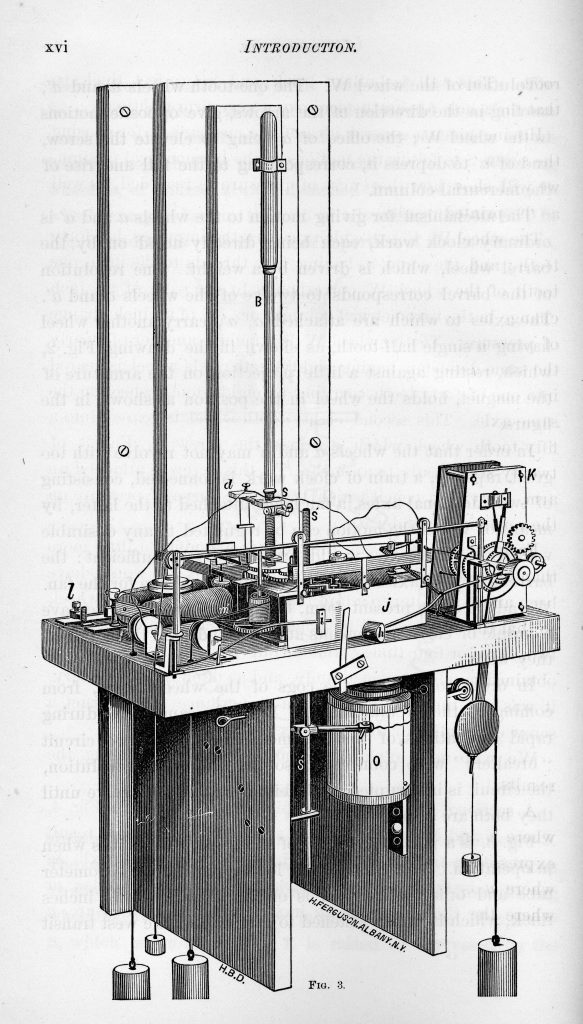Instruments
In regards to the last post, here’s Verplanck Colvin himself, taking notes on the right. The instrument he’s using is called a theodolite, which is essentially a small rotating telescope for measuring horizontal and vertical angles. Well, I guess in this case it’s not really a small telescope at all. That looks like a brass telescope, maybe 4″ or so.
Colvin called this his “grand theodolite,” and last I checked, no one was sure where it had ended up. Such a big and impressive big of technology porbably wasn’t scrapped (although, given that he and his crew had to hump this thing up and down a mountain, they probably wanted to). If anybody has any idea, I’d love to know what happened to it.

Here’s a less portable piece of technology. This is George Washington Hough’s “automatic registering and printing barometer.” It was Hough’s pride and joy. He the bulk of the second Dudley annals describing it and showing tables of its results.
The object labeled B is a cylinder of mercury attached to a support frame that is bolted to a brick wall in the observatory. A float is suspended in the mercury which rises and falls reacting to changes in the air pressure. Changes in the position of the float trigger electromagnets, which release gears in the mechanism and cause the pen arm, S, to change position to match the float. A drum wrapped in paper, O, rotates against the pen, recording a steady line that peaks and dips with the pen arm.
The weights at the bottom power the gears and the drum. A battery powers the electromagnets. By using batteries just to lock and unlock the gears, the use of electricity could be kept to a minimum. Important in an are where recharging batteries required refreshing the chemicals.
Obviously it’s more complicated than I’m making it sound, but Hough was able to make it work. It’s probably worth mentioning that when Hough was laid off in 1873, he went into private business selling his own inventions and was apparently successful.

